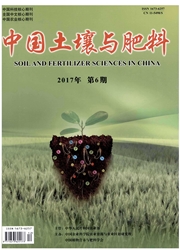

 中文摘要:
中文摘要:
通过盆栽试验,研究了在低氮(不施氮)和高氮(施氮0.2 g·kg^-1)水平下接种不同种类丛枝菌根(AM)真菌[Funneliformis mosseae(BGC-NM03D)、Claroideoglomus etunicatum(BGC-NM01B)和Rhizophagus intraradices(BJ09)]对小麦生长、氮吸收及根内4个硝态氮转运蛋白(NRT)基因、1个辅助蛋白(NAR)基因和2个铵态氮转运蛋白(AMT)基因表达的影响。结果表明,3种AM真菌均能够侵染小麦根系,以R.intraradices菌根的侵染率最高;接种R.intraradices或C.etunicatum能够显著提高小麦的生物量或地上部氮吸收量;无论是高氮还是低氮处理,接种AM真菌后均显著下调了小麦根内NRT、NAR和AMT基因的表达水平,且不同AM真菌调控小麦根内氮转运蛋白基因表达的能力具有明显差异。
 英文摘要:
英文摘要:
A pot experiment was carried out to investigate the effects of inoculation of different arbuscular mycorrhizal( AM)fungi [Funneliformis mosseae( BGC-NM03D), Claroideoglomus etunicatum( BGC-NM01B), Rhizophagus intraradices( BJ09) ] on growth,nitrogen uptake and expression of 5 nitrate transporter( NRT NAR) and 2 ammonium transporter( AMT) genes in roots of wheat under low N( no N application) and high N( N 0. 2 g·kg^-1soil) treatments. The results indicated that wheat roots were colonized by all the three AM fungi,and the fungus R. intraradices had the highest colonization rate in both N treatments. The inoculation of R. intraradices and C. etunicatum significantly increased shoot biomass or shoot N accumulation compared with the non-mycorrhizal control. The transcription levels of all the NRT and AMT genes in roots of wheat were down-regulated by inoculating the AM fungi in both N treatments,and different AM fungi exhibited different abilities to regulated the expression of the NRT,NAR and AMT genes.
 同期刊论文项目
同期刊论文项目
 同项目期刊论文
同项目期刊论文
 Arbuscular mycorrhizal fungi differ in their ability to regulate the expression of phosphate transpo
Arbuscular mycorrhizal fungi differ in their ability to regulate the expression of phosphate transpo The expression of nitrogen transporter genes in roots of winter wheat (Triticum aestivum L.) in resp
The expression of nitrogen transporter genes in roots of winter wheat (Triticum aestivum L.) in resp Expression patterns of ?ve genes involved in nitrogen metabolism intwo winter wheat (Triticum aestiv
Expression patterns of ?ve genes involved in nitrogen metabolism intwo winter wheat (Triticum aestiv 期刊信息
期刊信息
